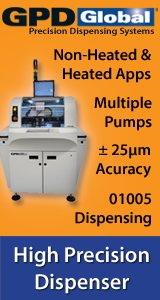Printed Circuit Board Assembly & PCB Design Forum
SMT electronics assembly manufacturing forum.
- SMTnet
- »
- Electronics Forum
- »
- Immersion Gold
Immersion Gold
![]()
![]() I am having problems processing immersion gold boards. The...
- Sep 30, 1999
by
Chris May
I am having problems processing immersion gold boards. The...
- Sep 30, 1999
by
Chris May
![]()
![]()
![]() | I am having problems processing immersion gold boards. T...
- Sep 30, 1999
by
Wolfgang Busko
| I am having problems processing immersion gold boards. T...
- Sep 30, 1999
by
Wolfgang Busko
![]()
![]()
![]() | | I am having problems processing immersion gold boards....
- Sep 30, 1999
by
davef
| | I am having problems processing immersion gold boards....
- Sep 30, 1999
by
davef
![]()
![]()
![]() | I am having problems processing immersion gold boards. T...
- Oct 01, 1999
by
| I am having problems processing immersion gold boards. T...
- Oct 01, 1999
by
![]()
![]() | | | I am having problems processing immersion gold board...
- Oct 01, 1999
by
Wolfgang Busko
| | | I am having problems processing immersion gold board...
- Oct 01, 1999
by
Wolfgang Busko
![]()
- SMTnet
- »
- Electronics Forum
- »
- Immersion Gold







